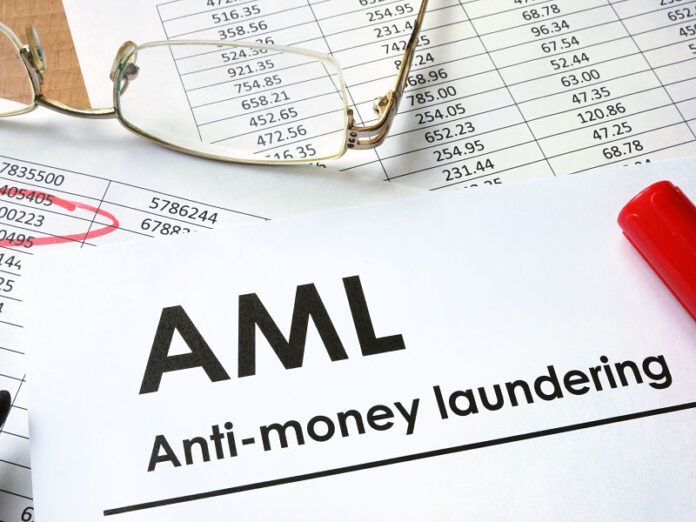Money laundering problems are growing worldwide and are becoming tougher to detect. Money launderers use businesses like FinTechs, banks, insurance companies, cryptocurrencies, gaming platforms, casinos and other financial services to move their illegal money around. Anti-money laundering directives are built to uncover these abnormal monetary patterns in all the financial transaction data. By following these regulations and AML directives such as Bank Secrecy Act (BSA) and the USA Patriot Act, financial institutions and other businesses operating in the financial industry can identify illegal money and prevent the acts of money laundering.
What AML Regulations Do Banks Need to Follow?
When following AML compliance, firms need to meet a specific standard that is set forth by the regulatory bodies. If a financial institution fails to keep up with these standards, then government and regulatory bodies such as US Treasury Department’s Financial Crimes Enforcement Network (FinCEN), FATF and Financial Industry Regulatory Authority can fine these businesses for non-compliance.
Compliance teams of banks and financial institutions need to be aware of regulations that they have to follow based on geographical locations, business type and locale. Businesses need to build full-proof internal control methods, including assessing the level of risk a customer possesses and a customer identification program, to keep up with due diligence requirements.
10 Anti-Money Laundering Rules That Need to Be Followed
Complying with AML directives can be tough for most businesses as all businesses have different risk factors. Regardless of the different business risk levels, there are some common rules that every compliance team should follow to successfully comply with directives.
Read Also: Top 5 Jobs From Around the World
We have mapped out the 10 common anti-money laundering rules and regulations that businesses should consider to prevent money laundering and avoid non-compliance fines. These steps are vital for a healthy compliance program.
-
Structuring
Structuring is the step of splitting transactions into multiple smaller transactions to avoid reporting requirements. Financial institutions are required to report any cash transaction exceeding $10,000. Fraudsters are aware of this requirement and make transactions just below the reporting threshold. Businesses and compliance teams need to look for transaction patterns that continuously are just below the reporting threshold.
-
Profile Changes Before a Large Transactions
This rule helps banks and FIs to identify a situation where a customer makes unnecessary profile changes to personally identifiable information shortly before they complete a transaction. This can indicate account takeover fraud or layering activity to hide the flow of funds. It also signifies that fraudsters purchased an inactive account from the dark web and is updating the information before making fraudulent purchases.
-
Suspicious User Behavior
This rule for AML compliance helps in identifying account takeover fraud or externally influenced activity. It should help in identifying transactions that deviate from the party’s standard transaction habits. It should also help in identifying their financial profile, including their occupation, income level, marital status and education level. These standards must be set carefully to avoid excessive false positives.
-
Boost in Transaction Volume or Value
In this rule, banks and businesses can identify patties with suspiciously high pay-out transaction volumes or a sudden increase in the value of a person’s or business’s outgoing transactions compared to their recent average. A rule like this is essential in AML compliance and for P2P networks that have the capability to withdraw funds to an outgoing account. Following this rule allows businesses to filter out parties that have had their accounts for less than 90 days and have low account balance, and low outgoing transactions.
-
Circulation of Funds
Circulation of funds occurs when an individual pay themselves through different accounts. This rule for AML compliance helps identify whenever an entity deposits casino checks, or purchase of bank drafts that are used at one or more casinos, and casino check with memos that suggests that earnings aren’t the result of casino winning.
-
Enhanced Flow-Through Activity
This rule is perfect for identifying parties whose total value of credit is similar to total value of debits over a very small time frame. A rule like this is perfect for a service that usually offers a collection of funds that seem out of place.
-
Low Number of Buyers
On platforms that usually have many buyers interacting with a single seller, the rule should identify merchants that receive payments from a small number of buyers. This can help in stopping the flow of money laundering and should only fire for accounts older than a specific threshold to verify low diversity over time for merchants to improve their interactions.
-
Lack of Communication Between Buyer and Seller
Platforms that keep track of the frequency of communication between buyers and sellers on the service, this rule should help filter out merchants with high earnings but very few sent messages. This often suggests money laundering on a higher level than conventional commercial activity. This rule should also trigger based on an adjustable percentage threshold of messages that are sent per day. It should also help in filtering out merchants with a higher percentage of their activity from new accounts.
-
High-Risk Geographical Locations
This rule for AML compliance relies more on geographical location of a business, individual or entity’s accounts. Some examples of high risk countries include Cayman islands, swiss accounts. Common risk categories for banking can include high banking secrecy, high financial crime, drug trafficking and known tax evasion companies. The biggest example of this is when FATF updated their monitoring policy in June 2021 for Haiti, Malta, The Philippines and South Sudan and it removed Ghana from the list.
-
Anonymizing Source of Funds
This rule for AML compliance should focus on situations where an entity sends funds into decentralized exchanges (DEXes) and then extracts the funds later. It should also help in identifying if and when a party converts their currency into a tokenized item and then withdraws it. Both of these activities primarily suggest money laundering.




